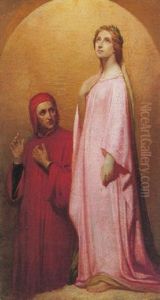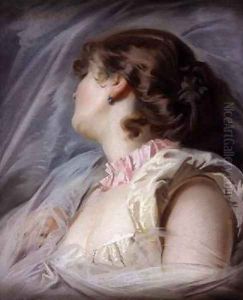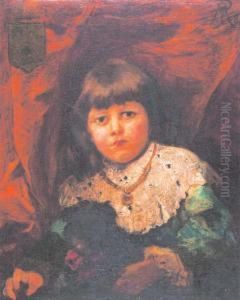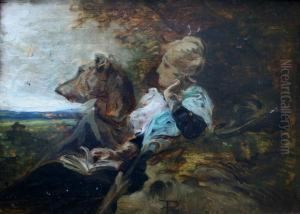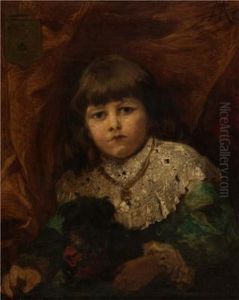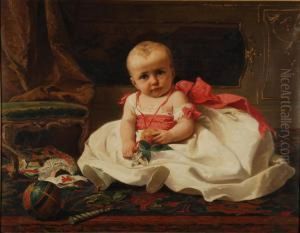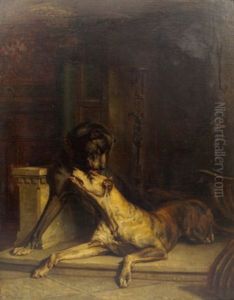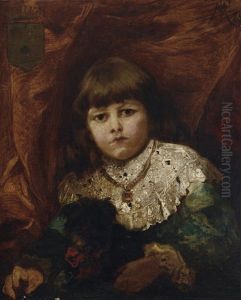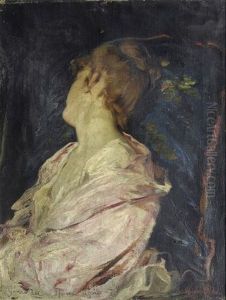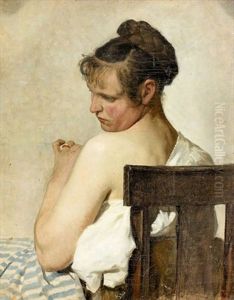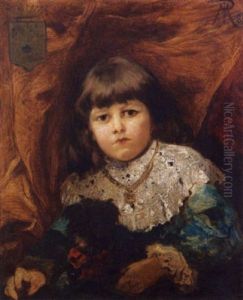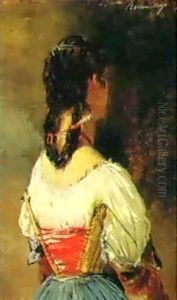Pietro Morgari Paintings
Pietro Morgari was an Italian painter born in 1852 in Turin, Italy. He was part of the broader 19th-century European art movement, contributing significantly to the Italian artistic landscape. Morgari's life and work were deeply rooted in the cultural and historical context of Italy during a period marked by significant political, social, and technological changes. Italy was in the midst of unification, and there was a burgeoning interest in national identity, which influenced its art and culture profoundly.
Morgari's artistic journey began at the Accademia Albertina in Turin, where he honed his skills and developed a distinctive style that would later define his career. He was primarily known for his historical and religious paintings, which were characterized by their vivid detail, emotional depth, and vibrant color palette. Morgari had a keen interest in the dramatic and the spiritual, often infusing his works with a sense of narrative that invited viewers to engage more deeply with the subjects he portrayed.
Throughout his career, Pietro Morgari remained actively involved in the Italian art scene, participating in numerous exhibitions and receiving critical acclaim for his work. His paintings were sought after by both private collectors and public institutions, and he was commissioned to create significant works for churches and public buildings throughout Italy. Morgari's contributions to Italian art were not limited to his paintings; he was also a respected teacher, imparting his knowledge and skills to a new generation of artists at the Accademia Albertina, where his journey as an artist had begun.
Morgari's legacy is that of an artist who captured the essence of his time, blending traditional techniques with a unique sensitivity to the themes of his era. His works continue to be appreciated for their beauty, emotional resonance, and historical value. Pietro Morgari passed away in 1935, leaving behind a body of work that continues to be celebrated and studied for its contribution to the Italian art history of the 19th and early 20th centuries.
